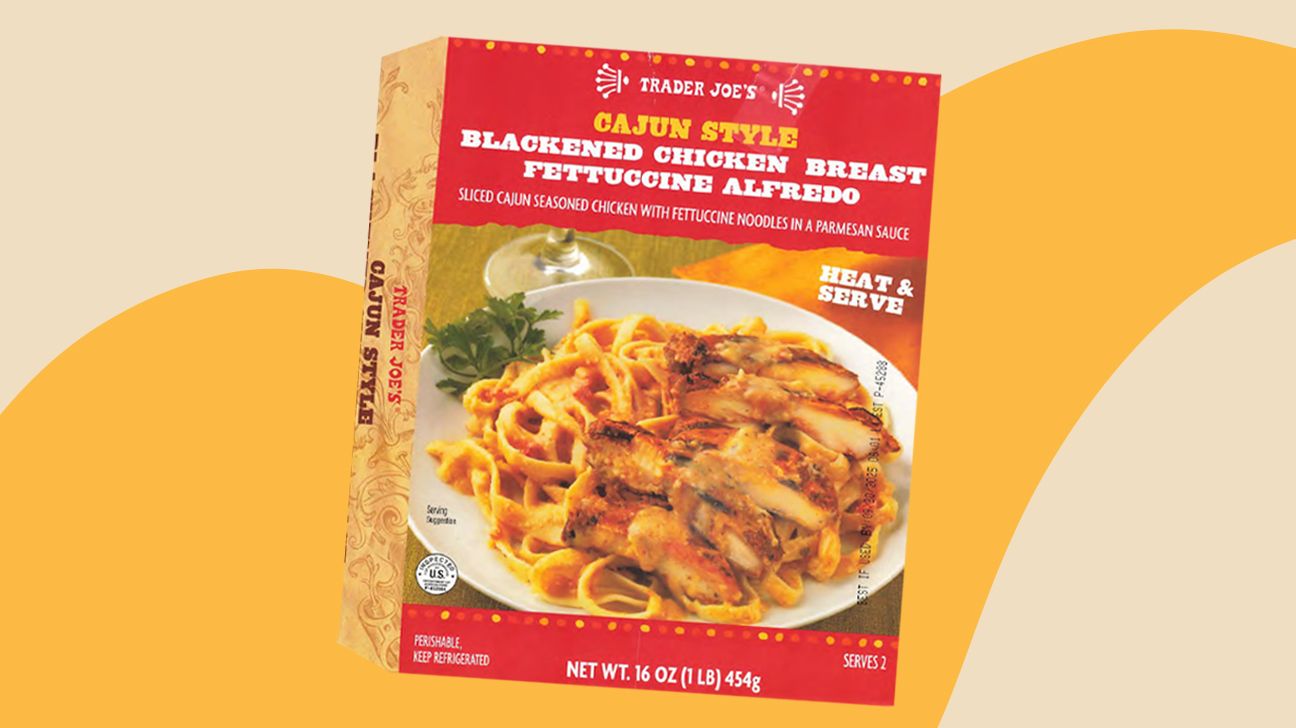
- The USDA and FDA are warning consumers to throw away prepared pasta meals available at several national retailers, including Trader Joe’s, due to potential Listeria contamination.
- The latest health warning is part of a growing national Listeria outbreak that has been under investigation since June.
- So far, the CDC has reported 20 cases of Listeria infection and four deaths tied to the prepared meals.
The U.S. Department of Agriculture’s Food and Safety Inspection Service (FSIS) recently issued an alert about ready-to-eat pasta meals contaminated with Listeria.
The Food and Drug Administration (FDA) has been investigating the Listeria outbreak in pasta meals since June.
The pasta meals are sold at several national retailers, including Albertsons, Walmart, Trader Joe’s, and Kroger. The supplier, Nate’s Fine Foods, is recalling certain lots of its pre-cooked pasta.
The FDA identified five affected products:
- Trader Joe’s Cajun Style Blackened Chicken Breast Fettuccine Alfredo, 16 oz.
- Marketside Linguine with Beef Meatballs & Marinara Sauce, 12 oz.
- Marketside Grilled Chicken Alfredo with Fettuccine, 12.3 oz.
- Marketside Grilled Chicken Alfredo with Fettuccine, 32.8 oz.
- Home Chef Chicken Fettuccine Alfredo, 12.5 oz.
- Scott & Jon’s Shrimp Scampi with Linguini Bowls, 9.6 oz.
Albertsons deli items made with bowtie pasta are also being recalled due to possible Listeria contamination. The company is voluntarily pulling these products from shelves.
The FSIS alert is the latest development in a nationwide outbreak first detected. Since then, additional contaminated products have been identified, most recently Trader Joe’s Fettuccine Alfredo and Marketside Linguine with Beef Meatballs & Marinara Sauce.
FreshRealm, the manufacturer of the chicken fettuccine alfredo meals, began testing ingredients in its meals following the FDA’s initial investigation. Testing of the affected products indicates they are linked to the same outbreak, showing the presence of genetically related strains of Listeria monocytogenes.
Healthline reached out to both FreshRealm and Nate’s Fine Foods, but neither company could be reached for comment. Trader Joe’s has issued a statement about the recall online, writing that although no food products have tested positive for Listeria, they are recalling the product “in an abundance of caution.”
“At Trader Joe’s, nothing is more important than the health and safety of our customers and Crew Members… We voluntarily take action quickly, aggressively investigating potential problems and removing the product from sale if there is any doubt about its safety or quality,” a Trader Joe’s representative told Healthline.
So far, the Centers for Disease Control and Prevention (CDC) reports that the outbreak is linked to 20 confirmed cases of listeriosis and four deaths. The affected products were distributed nationwide, and cases have been reported in 15 states, including California, Texas, Louisiana, Illinois, and Michigan.
“People really do need to take these warnings seriously,” said John Schieffelin, MD, associate professor of pediatrics at Tulane University.
“For certain groups of people, this is really a very serious disease. Make sure that you don’t have those products in their household. If you do, toss them in the trash. It’s not worth it,” he added.
While most of these products are no longer available for sale, consumers are advised to check their refrigerators and freezers for the recalled products and either throw them away or return them to the store where they were purchased. The FDA’s website provides detailed lot numbers and expiration dates for affected products.
What is listeriosis?
Listeriosis is an infection caused by the bacterium Listeria monocytogenes. In the United States, Listeria ranks as the third leading cause of death from foodborne illness, after Salmonella and Toxoplasma gondii.
Each year in the United States, about 1,250 people are diagnosed with listeriosis. The infection is serious and can be deadly. Nearly all cases require hospitalization, and about one in five patients die.
Less severe symptoms of listeriosis generally resolve in 1–3 days and typically include:
- fever
- nausea and vomiting
- diarrhea
- muscle ache
More severe, potentially life-threatening symptoms include:
- headaches, neck stiffness
- confusion, loss of balance
- convulsions
Healthy people can get infected, but they rarely become seriously ill. Those at highest risk include pregnant women, newborns, adults age 65 and older, and people with weakened immune systems.
“Listeria is another very atypical type of food poisoning. You can get meningitis, you can get seizures, you can have a loss of your faculties, like balancing or walking. You can have an altered mental status. All of that is related to the fact that you’re having an infection that’s affecting your brain,” said Rais Vohra, MD, medical director at California Poison Control and professor of clinical emergency medicine at the University of California San Francisco.
Listeriosis is up to 20 times more common in pregnant people than in the general population. The infection can cross the placenta and infect the fetus. About one in four pregnancy-related cases result in miscarriage or stillbirth, according to the CDC.
“The other thing that’s challenging about listeriosis is that it really requires very specific antibiotics. A lot of the antibiotics that you would generally get put on if you show up to the emergency room with diarrhea won’t work for it.,” said Schieffelin.
If you develop any of the above symptoms or think you may have eaten a contaminated product, contact your healthcare provider right away. Early testing and treatment for listeriosis can help prevent serious illness.
How does listeria contamination occur?
Contamination can occur at many points in a food’s production and distribution cycle.
Listeria is a hardy bacterium that occurs naturally in the environment. It is commonly found in soil, water, sewage, and on animals. Because of this, raw foods such as vegetables, dairy, and meat can carry the bacteria before they ever reach a factory.
Unlike many other foodborne pathogens, Listeria can survive and even grow at refrigeration temperatures, which makes it especially difficult to control once it enters the food supply chain.
Listeria can thrive in unsanitary manufacturing conditions. Contamination typically happens when Listeria from raw ingredients or the environment makes its way onto equipment, surfaces, or into ready-to-eat products.
If cleaning and sanitation are inadequate in food processing plants, equipment, surfaces, and even workers can carry bacteria. If prepared foods, such as pasta meals, deli meats, soft cheese, or other pre-cooked meals, are contaminated after cooking or before sealing, they may carry the bacteria directly to consumers.
“People do need to be aware of how complicated the food chain is,” Vohra said.
“All of our food comes from a number of different sources and gets shipped here and there. All of those preservation mechanisms have to be intact along the way, whether it’s the cold chain for your refrigerated foods, or just the washing and handling of the product.”
Actionable steps to avoid listeriosis
Listeria is associated with a wide variety of food products including raw milk, raw fruits and vegetables, and ready-to-eat meats, so prevention is key.
“By the time somebody gets hospitalized from this, they are very critically ill. So we really want to make sure people understand that prevention is going to be a key factor,” said Vohra.
You can take simple, actionable steps to lower your risk for listeriosis. First, if you think you may have purchased any of the products mentioned above, do not eat them; throw them away or return them.
Clean any areas that may have come into contact with the affected products, including your refrigerator, freezer, counter tops, sink, and utensils.
For basic prevention of listeriosis and other foodborne infections:
- Wash fruits and vegetables thoroughly before consuming.
- Cook food thoroughly to kill any pathogens.
- Practice good hand hygiene by washing your hands regularly.
- Keep your kitchen surfaces and refrigerator clean.
As for the current outbreak: “We’re not out of the woods yet,” Vohra said.
“We’re hoping that we’ve taken care of the source, and so therefore we’re seeing the tail end of the number of cases, but we also know that Listeria can trick people. It may take weeks for the infection to really manifest to a level where people see hospitalization.”

